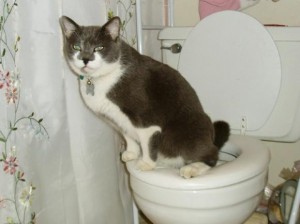Every person has got their unique rationale with regards to How to Dispose of Cat Poop and Litter Without Plastic Bags.

Intro
As feline proprietors, it's essential to be mindful of exactly how we throw away our feline friends' waste. While it might seem convenient to purge cat poop down the toilet, this practice can have damaging consequences for both the environment and human health.
Environmental Impact
Purging pet cat poop introduces harmful virus and bloodsuckers into the water system, posing a significant risk to marine environments. These contaminants can adversely impact marine life and concession water quality.
Health Risks
In addition to ecological concerns, flushing cat waste can likewise posture health risks to humans. Cat feces may consist of Toxoplasma gondii, a bloodsucker that can cause toxoplasmosis-- a potentially extreme ailment, especially for expecting ladies and people with weakened immune systems.
Alternatives to Flushing
The good news is, there are more secure and much more responsible means to take care of cat poop. Take into consideration the following options:
1. Scoop and Dispose in Trash
The most common technique of throwing away pet cat poop is to scoop it into a naturally degradable bag and throw it in the garbage. Be sure to utilize a specialized trash inside story and take care of the waste immediately.
2. Usage Biodegradable Litter
Select naturally degradable cat clutter made from materials such as corn or wheat. These clutters are eco-friendly and can be safely dealt with in the garbage.
3. Bury in the Yard
If you have a backyard, consider hiding feline waste in an assigned area far from vegetable yards and water sources. Make certain to dig deep enough to avoid contamination of groundwater.
4. Mount a Pet Waste Disposal System
Buy an animal waste disposal system especially made for cat waste. These systems utilize enzymes to break down the waste, minimizing smell and ecological impact.
Final thought
Accountable family pet ownership prolongs past supplying food and shelter-- it additionally involves proper waste administration. By refraining from flushing cat poop down the toilet and selecting alternative disposal techniques, we can reduce our environmental impact and shield human wellness.
Why Can’t I Flush Cat Poop?
It Spreads a Parasite
Cats are frequently infected with a parasite called toxoplasma gondii. The parasite causes an infection called toxoplasmosis. It is usually harmless to cats. The parasite only uses cat poop as a host for its eggs. Otherwise, the cat’s immune system usually keeps the infection at low enough levels to maintain its own health. But it does not stop the develop of eggs. These eggs are tiny and surprisingly tough. They may survive for a year before they begin to grow. But that’s the problem.
Our wastewater system is not designed to deal with toxoplasmosis eggs. Instead, most eggs will flush from your toilet into sewers and wastewater management plants. After the sewage is treated for many other harmful things in it, it is typically released into local rivers, lakes, or oceans. Here, the toxoplasmosis eggs can find new hosts, including starfish, crabs, otters, and many other wildlife. For many, this is a significant risk to their health. Toxoplasmosis can also end up infecting water sources that are important for agriculture, which means our deer, pigs, and sheep can get infected too.
Is There Risk to Humans?
There can be a risk to human life from flushing cat poop down the toilet. If you do so, the parasites from your cat’s poop can end up in shellfish, game animals, or livestock. If this meat is then served raw or undercooked, the people who eat it can get sick.
In fact, according to the CDC, 40 million people in the United States are infected with toxoplasma gondii. They get it from exposure to infected seafood, or from some kind of cat poop contamination, like drinking from a stream that is contaminated or touching anything that has come into contact with cat poop. That includes just cleaning a cat litter box.
Most people who get infected with these parasites will not develop any symptoms. However, for pregnant women or for those with compromised immune systems, the parasite can cause severe health problems.
How to Handle Cat Poop
The best way to handle cat poop is actually to clean the box more often. The eggs that the parasite sheds will not become active until one to five days after the cat poops. That means that if you clean daily, you’re much less likely to come into direct contact with infectious eggs.
That said, always dispose of cat poop in the garbage and not down the toilet. Wash your hands before and after you clean the litter box, and bring the bag of poop right outside to your garbage bins.
https://trenchlesssolutionsusa.com/why-cant-i-flush-cat-poop/
:max_bytes(150000):strip_icc()/0S1A1090-49a8e2c66f8e41d6901f2559787a7f24.jpg)
We are very excited about Can You Flush Cat Poop Down The Toilet? and I am hoping you appreciated the entire blog entry. Loved our write-up? Please share it. Help someone else discover it. Thank-you for going through it.
Request Free Estimate